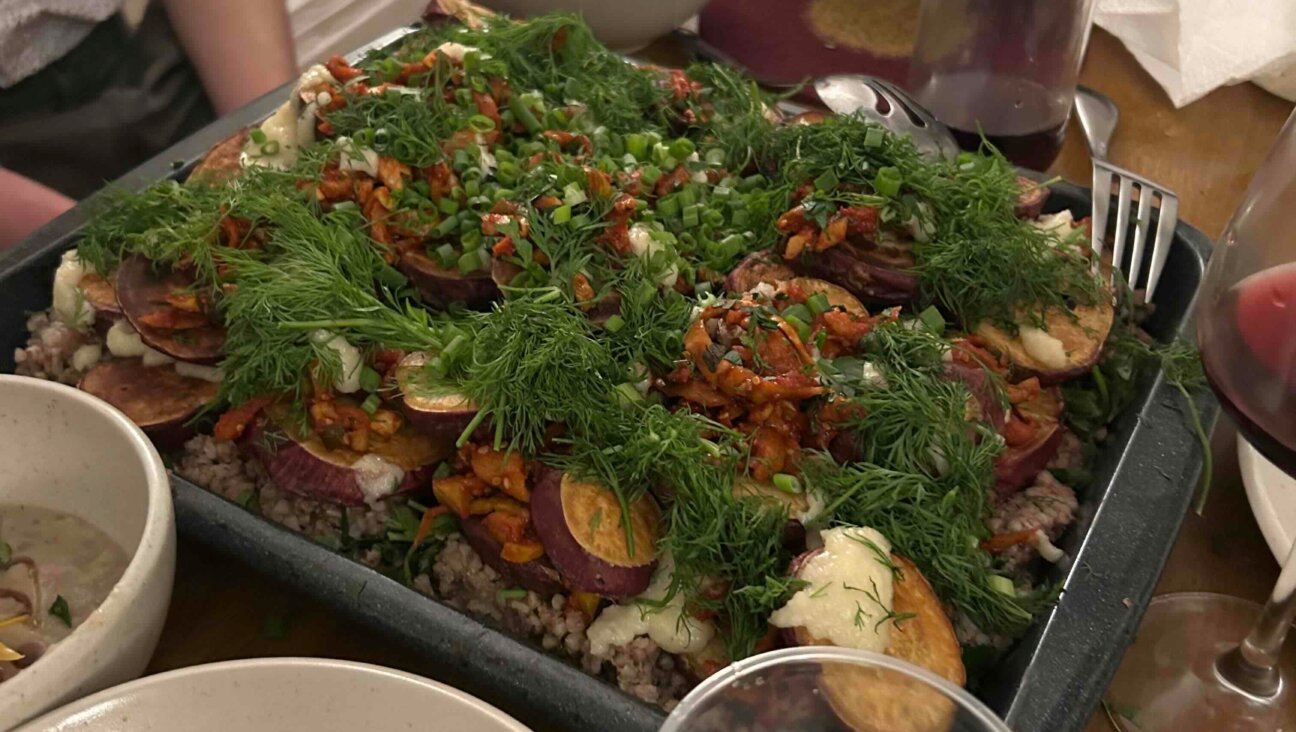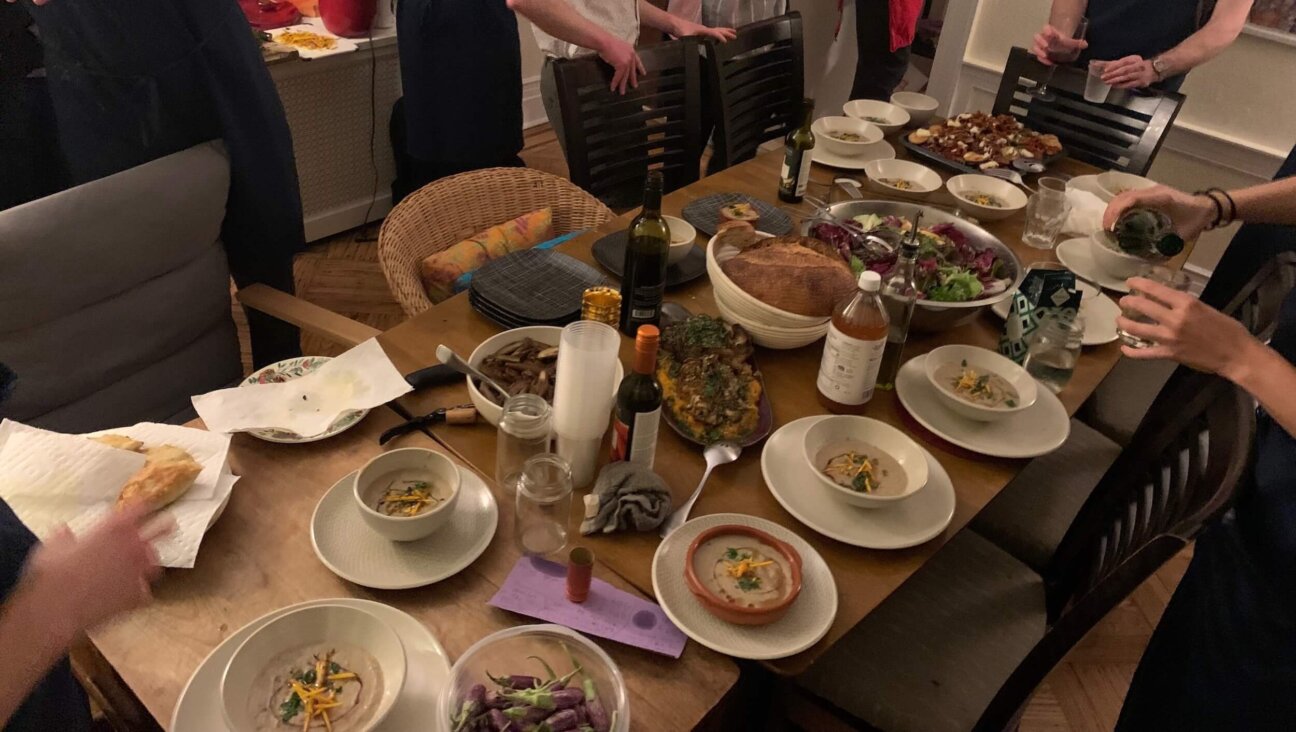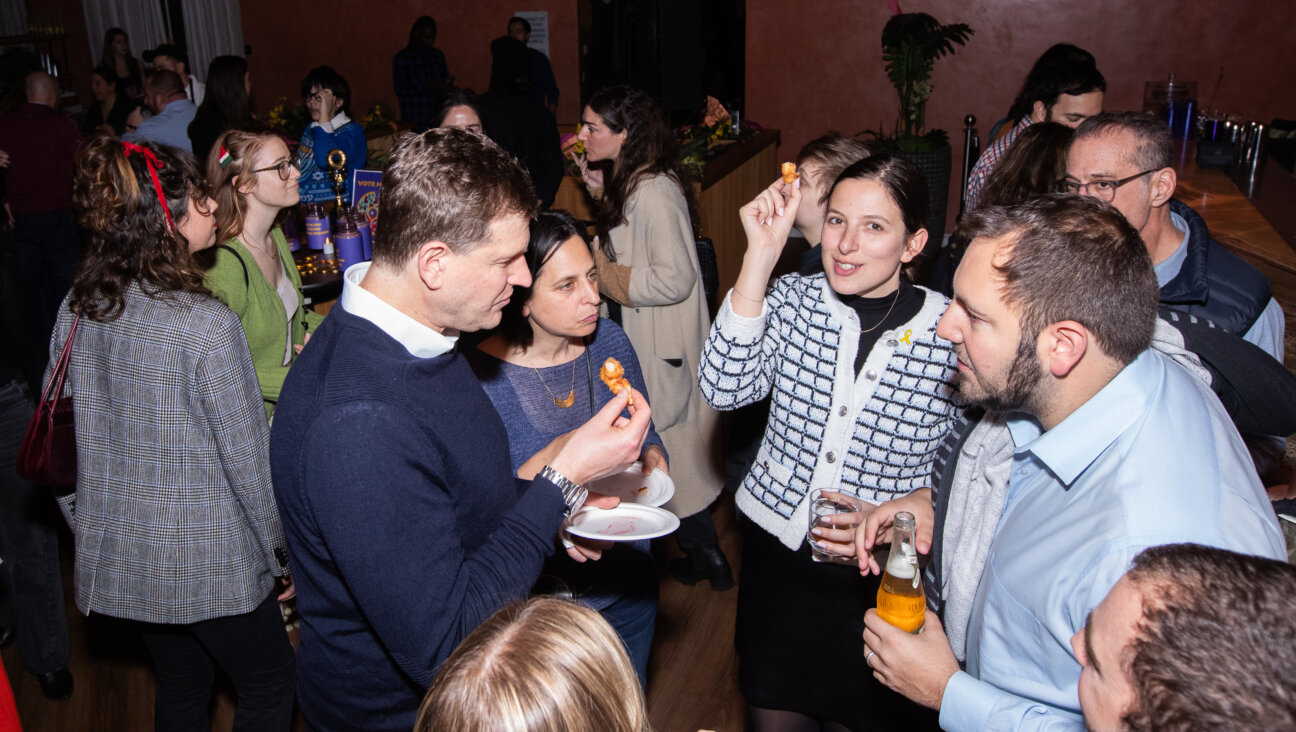My mother’s chopped liver isn’t punishment, it’s therapy

Image by Lior Zaltzman
This essay is reposted with permission from The Bittman Project, where it originally appeared.

Image by Lior Zaltzman
My father-in-law always appreciates my cooking, no matter how unfamiliar he is with what I’ve made. In the 29 years since I married into the family, I’ve introduced him to matzah ball soup, brisket, rugelach, and other delicacies he’d never encountered growing up on the prairies of Western Canada. He’s never said no to anything I’ve offered, which I believe is less a testament to my culinary skills than proof of his fearless and enthusiastic appetite for anything edible.
That changed earlier this year, when I offered to make him chopped liver to beef up his hemoglobin levels before he started treatment for gastric lymphoma.
He wrinkled his nose as if I’d offered him a loaf of moldy challah. “No thanks,” he said. “I do not like liver.”
“Neither do I,” I said. “And I hate hard-boiled eggs even more. But when you mash them up with onions fried in a ridiculous amount of stick margarine, the whole thing is delicious.”
“She’s right,” my husband said. “It’s really good, Dad.” To me, he said, “But you should make it with beef liver. Beef has more iron.”
Now it was my turn to wrinkle my nose. To my knowledge, my mother (may she rest in peace) and her mother before her and hers before her (may they also rest in peace), all the way back to the shtetls in Ukraine and Lithuania from which my forebears sprung, had never used anything other than chicken parts to make their chopped liver.(Doubtless, they hadn’t used stick margarine, either, but that was a staple of Mom’s recipe and now it’s a staple of mine.)
My husband is a scientist who does a lot of food research. If he said beef liver had more iron than chicken liver, who was I to argue? And given that this was to be therapeutic chopped liver, not an appetizer chilled in a Jewish-star-shaped Jell-O mold before being served at a simcha, it made sense to use whatever had the most iron. Still, I balked.
I decided to do my own research. Using the Canadian Nutrient File and the USDA’s FoodData Central website, I copied the statistics for every relevant form of beef and chicken liver available: raw, fried, pate, spread, chopped with eggs and onions, and prepared with onions.
The percentage of iron per 100 grams changed depending on how the liver was prepared, but the results were consistent.
My husband was wrong.
Chicken liver has more iron than beef liver. In its raw form, it has nearly twice as much iron. Cooked and or chopped with other ingredients, the percentage drops slightly but chicken liver still wins.
I was thrilled, not because I’m petty and like proving my husband wrong (although that factored in), but because Jewish mothers everywhere prevailed. They knew all along that chicken liver was healthier than beef liver!
Or maybe they used chicken liver because it was easier to kill a chicken than a cow, making chicken livers more accessible. Ultimately, their motivation was less interesting to me than why chicken liver has more iron than beef, which is why I reached out to Doug Korver, a poultry nutrition researcher and professor at the University of Alberta in Edmonton.
Like me, Korver is not a liver fan, although unlike me, he doesn’t think the a la carte version tastes like a blend of poop, cardboard, and shoe leather.
“It has a very metallic taste and a lot of that comes from the iron,” he said.
Here is another reason that liver tastes horrible: at some point, much of the body’s waste travels through it. However, Korver took issue with my referring to the organ as a garbage dump.
“It’s more like the recycling center than the dump,” he observed. “Not everything that goes through the recycling center is going to be usable. Some things can be repackaged and repurposed, and that’s basically the job of the liver. That’s one of the important jobs.”

The liver’s other jobs include synthesizing blood proteins and, when the body mounts an immune response, storing iron in order to keep the invading bacteria from using that iron to grow and spread. Hence, the hefty iron content (and the metallic taste).
“Assuming the animal is healthy, there are probably not large amounts of toxic compounds,” Korver said in a successful effort to reassure me that liver won’t kill me.
The one question Korver couldn’t answer was why chicken liver has more iron than beef. He quickly disputed my suggestion that birds produce more hemoglobin than cows because they need more aerobic energy. Apparently my argument that birds fly and cows hang out in pastures (where, much of the time, they don’t even bother standing up) was not scientifically convincing.
“That wouldn’t explain why pork liver has more iron than chicken liver,” Korver pointed out, something I hadn’t considered, because what Jewish mother would consider making chopped liver out of pork?
Not this one. I’m sticking to chicken liver. My father-in-law might not like it, but I’ve got plenty of friends who are more than happy to take it off my hands. That’s a good thing, because Mom’s recipe makes around three cups. I love chopped liver but even I can’t consume that much.
Irlene Waldman’s Chopped Liver
Mom used to use a meat grinder for this recipe, but after she got a food processor, she never looked back. I, too, prefer my chopped liver thoroughly pulverized; the consistency makes it easier to forget that I’m consuming two of my most dreaded foods.
Ingredients
3 medium-to-large onions
½ cup stick margarine
1 pound chicken livers
4 hard-boiled eggs
Instructions
1. Slice the onions and sauté them in the margarine until they’re wilted and translucent. Then add the livers and cook for about five minutes, until they’re no longer red. Don’t overcook them; you don’t want them to be tough.
2. Put the mixture into the food processor including the peeled, hard-boiled eggs, and mix till smooth. Add salt to taste — you won’t need much. Start with a quarter teaspoon and work your way up. The salt helps cut that metallic taste, but the liver and margarine are already salty so don’t overdo it.
3. Serve on crackers, rye bread, or the way Mom did: inside the cavity of celery.
Debby Waldman is an author and journalist in Edmonton, Alberta.
















